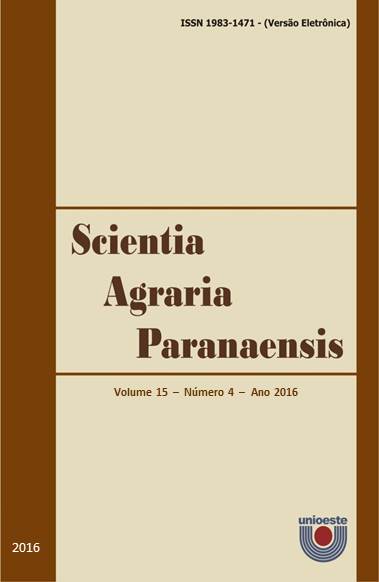Alternative control of Meloidogyne incognita in tomato plants
DOI:
https://doi.org/10.18188/sap.v15i4.12491Keywords:
Homeopatia, controle biológico, nematoides de galhas, Ruta graveolens.Abstract
The genus Meloidogyne has a wide geographical distribution, parasitizing plant cultivars around the world and causing large losses for farmers. Then, is necessary the search for alternative control methods which are cheap and that improving the quality of products and protection of the environment. The aim of this study was to evaluate different alternative control methods against Meloidogyne incognita on tomato plants: extract of Ruta graveolens, homeopathic products and commercial bioproducts. Five treatments were evaluated: non-treated plants (water), extract of R. graveolens, Thuya occidentalis homeopathic, Cina homeopathic, bioproduct based on the fungus Pochonia chlamidosporia and bioproduct based on Bacillus spp. and Trychoderma spp. The assay was conducted for eight weeks with weekly foliar applications. We evaluated the length and volume of the root, total plant height, number of leaves, fresh and dry masses, index galls, eggs and juveniles in root, and reproduction factor. The experiment was a completely randomized design with five replications. Data were analysed by Tukey test at 5% probability. The results showed that tomato plants were resistance when treated with homeopathic Thuya and Cina and bioproduct based on the fungus P. chlamydosporia, whereas the tomato plants were susceptible to nematodes when treated with R. graveolens extract, and the bioproduct based on Bacillus spp. and Trychoderma spp.
Downloads
Published
How to Cite
Issue
Section
License
Aviso de Direito Autoral Creative Commons
Política para Periódicos de Acesso Livre
Autores que publicam nesta revista concordam com os seguintes termos:
1. Autores mantém os direitos autorais e concedem à revista o direito de primeira publicação, com o trabalho simultaneamente licenciado sob a Licença Creative Commons Attribution que permite o compartilhamento do trabalho com reconhecimento da autoria e publicação inicial nesta revista.2. Autores têm autorização para assumir contratos adicionais separadamente, para distribuição não-exclusiva da versão do trabalho publicada nesta revista (ex.: publicar em repositório institucional ou como capítulo de livro), com reconhecimento de autoria e publicação inicial nesta revista.
3. Autores têm permissão e são estimulados a publicar e distribuir seu trabalho online (ex.: em repositórios institucionais ou na sua página pessoal) a qualquer ponto antes ou durante o processo editorial, já que isso pode gerar alterações produtivas, bem como aumentar o impacto e a citação do trabalho publicado (Veja O Efeito do Acesso Livre).
Licença Creative Commons
Esta obra está licenciada com uma Licença Creative Commons Atribuição-NãoComercial-CompartilhaIgual 4.0 Internacional, o que permite compartilhar, copiar, distribuir, exibir, reproduzir, a totalidade ou partes desde que não tenha objetivo comercial e sejam citados os autores e a fonte.


